
The Sagrada Familia, an iconic masterpiece designed by Antoni Gaudí, stands as a testament to the brilliance of Catalan modernism. This breathtaking basilica, still under construction after more than a century, captivates visitors with its intricate facades and soaring towers that pierce the sky.
Among the many architectural wonders in the world, The Majestic Beauty of Sagrada Familia in Barcelona, Spain shines brightly. Its unique blend of natural forms and spiritual symbolism invites admiration and reflection, making it a must-visit destination for art and architecture enthusiasts alike.
The Architectural Splendor of Sagrada Familia: A Masterpiece by Gaudí
The architectural splendor of the Sagrada Familia is not only a feast for the eyes but also a profound reflection of Gaudí's visionary genius. His innovative use of geometric shapes and organic forms creates a harmonious blend that mimics the natural world. This approach is evident in the basilica's fluid lines and intricate details, making it a masterpiece that transcends traditional architectural boundaries.
Gaudí's incorporation of light into the Sagrada Familia further enhances its beauty. The play of sunlight through the stained glass windows casts a kaleidoscope of colors across the interior, creating a spiritual ambiance that captivates visitors. Key elements that contribute to this effect include:
- Verticality: The soaring columns resemble trees, reaching upwards towards the heavens.
- Colorful Glass: The windows are designed to filter light in various hues, enriching the space.
- Symbolism: Each element serves a purpose, reflecting the Christian themes that inspired Gaudí.
Additionally, the Sagrada Familia showcases a unique combination of styles, primarily combining Gothic and Art Nouveau elements. This eclecticism is a hallmark of Gaudí's work, setting the basilica apart from other architectural feats. The following table highlights key architectural features that exemplify this diversity:
| Feature | Style |
|---|---|
| Spires | Gothic |
| Facade Details | Art Nouveau |
| Interior Columns | Organic |
Ultimately, the Sagrada Familia stands as a testament to the enduring legacy of Antoni Gaudí. Its architectural splendor continues to inspire awe and reverence among all who visit, solidifying its status as a universal symbol of creativity and human ambition. Each visit reveals new details, ensuring that this masterpiece remains a captivating experience for generations to come.
Exploring the Symbolism Behind Sagrada Familia’s Intricate Designs
The intricate designs of the Sagrada Familia are steeped in symbolism that reflects both Gaudí's personal beliefs and Christian theology. Each aspect of the basilica's architecture is meticulously crafted to evoke a deeper understanding of faith and nature. Gaudí believed that architecture should serve a higher purpose, and this is evident in the myriad of symbols woven throughout the structure.
For instance, the Passion Facade illustrates the suffering and sacrifice of Christ through its stark and angular designs, while the Nativity Facade celebrates the birth of Jesus with soft, flowing forms that echo the warmth of life. This duality showcases Gaudí's ability to convey complex themes through visual language. Key symbolic elements include:
- Nature Motifs: Elements such as leaves and flowers symbolize growth, renewal, and the divine.
- Christian Iconography: Statues and carvings represent various saints and biblical scenes, enriching the spiritual narrative.
- Numerology: The use of numbers, such as the twelve apostles and the three facades, reflects the significance of faith.
The interior of the Sagrada Familia further enriches this symbolism through its breathtaking use of light and color. The stained glass windows are not only artistic but also serve to convey a message of hope and redemption. As visitors walk through the basilica, they are enveloped in a tapestry of colors, illustrating key moments in the Christian story. This transformative experience is intended to inspire reflection and connection with the divine.
In conclusion, the Sagrada Familia is more than just an architectural wonder; it is a profound expression of faith and an embodiment of Gaudí's vision. The layers of symbolism embedded in its design invite visitors to explore and engage with the deeper meanings of life, spirituality, and the natural world. Each visit offers a new perspective, ensuring that this masterpiece continues to resonate with audiences for years to come.
The Construction Journey: How Sagrada Familia Became a Cultural Icon
The journey of constructing the Sagrada Familia began in 1882, driven by the vision of architect Antoni Gaudí. Initially envisioned as a neo-Gothic church, Gaudí transformed the design into a unique synthesis of architectural styles. This evolution not only reflects his innovative spirit but also marked the beginning of a cultural icon that would capture the hearts of millions around the world.
Over the decades, the construction of the Sagrada Familia has been a labor of love, shaped by both challenges and triumphs. Significant milestones in this journey include:
- Gaudí's Leadership: His hands-on approach and organic design principles remained central until his untimely death in 1926.
- Technical Innovations: The introduction of new construction techniques has allowed for the realization of Gaudí's complex designs.
- International Support: The basilica's ongoing funding comes from visitor donations, making it a collaborative global effort.
The Sagrada Familia's cultural significance escalated as it became a symbol of Catalonia's identity. The intertwining of local craftsmanship with modern technology has allowed for the continuation of Gaudí's vision, making it not just a building, but a canvas of artistic expression. The following table illustrates the major phases in its construction timeline:
| Year | Milestone |
|---|---|
| 1882 | Foundation stone laid |
| 1926 | Gaudí's death; construction continues |
| 2010 | Foundation of the Nativity Facade completed |
| 2026 | Projected completion for the centenary of Gaudí's death |
As the Sagrada Familia nears completion, it stands as a testament to human ambition and artistic dedication. The basilica's journey from a dream to an enduring cultural icon encapsulates the essence of Barcelona, blending history, faith, and artistry in a magnificent celebration of creativity.
Visiting Sagrada Familia: Tips for an Unforgettable Experience
Visiting the Sagrada Familia is a remarkable experience that can be enhanced with some thoughtful planning. To make the most of your visit, consider booking your tickets online in advance. This not only ensures your entry at a preferred time but also helps you skip long queues. Additionally, choosing a guided tour can provide invaluable insights into Gaudí's vision, enriching your understanding of this architectural marvel.
Another tip for an unforgettable experience is to visit during the early morning or late afternoon. During these hours, the light casts beautiful shadows and illuminates the intricate details of the basilica, making it perfect for photography. Also, take a moment to explore the surrounding park, where you can appreciate stunning views of the Sagrada Familia from different angles.
When touring the interior, don’t rush through. Spend time admiring the breathtaking stained glass windows that create a luminous atmosphere filled with vibrant colors. To fully appreciate the symbolism embedded in the structure, consider focusing on key elements such as:
- Natural Forms: Observe how organic shapes mimic the surrounding nature.
- Architectural Details: Look for the hidden symbols and stories within the design.
- Sound: Listen to the acoustics that enhance the spiritual ambiance of the basilica.
Lastly, be sure to take a moment to reflect in the quieter areas of the Sagrada Familia. This time for introspection allows you to connect more deeply with the artistry and meaning behind Gaudí's work. By following these tips, your visit to the Sagrada Familia will surely be a memorable journey through a masterpiece of architectural beauty.
Understanding the Religious Significance of Sagrada Familia in Barcelona
The Sagrada Familia is not just an architectural marvel; it is profoundly steeped in religious significance that resonates deeply with both locals and visitors alike. Designed as a Catholic basilica, its purpose extends beyond mere aesthetics, embodying the Christian faith through its intricate symbolism and spiritual narratives. Each element of the structure serves to inspire and uplift, inviting individuals to reflect on their own beliefs and the essence of spirituality.
One of the primary aspects of the Sagrada Familia's religious significance lies in its representation of the Holy Family—Jesus, Mary, and Joseph. The basilica's design incorporates elements that celebrate the life and teachings of Christ, with the three principal façades dedicated to different aspects of His journey: the Nativity, Passion, and Glory. This tripartite design not only honors the life of Jesus but also serves as a visual catechism, educating visitors about the core tenets of Christianity.
Additionally, the Sagrada Familia's architectural features are imbued with spiritual symbolism. The use of natural motifs, such as trees and flowers, signifies the connection between God, humanity, and nature. Visitors can appreciate how Gaudí's innovative approach blends art and faith, creating an environment that fosters spiritual contemplation. Key symbolic features include:
- Vertical Columns: Designed to resemble trees, they symbolize the connection between heaven and earth.
- Stained Glass Windows: These colorful elements illuminate the interior, representing divine light and grace.
- Religious Iconography: Numerous sculptures and carvings depict biblical stories, inviting reflection on faith and morality.
In essence, the Sagrada Familia serves as a living testament to faith and artistry, embodying the spiritual aspirations of its creator and the community it represents. Every visit offers an opportunity to not only admire its architectural beauty but also to engage with the profound messages woven into its design. This masterpiece stands as a beacon of hope and a reminder of the enduring power of belief.
Sagrada Familia: A Blend of Nature and Art in Gaudí's Vision
The Sagrada Familia is a remarkable fusion of nature and art that exemplifies Antoni Gaudí's unique vision. This architectural wonder draws inspiration from the organic shapes found in the environment, creating a seamless connection between the built and natural worlds. Gaudí believed that architecture should reflect the divine beauty of nature, and through this philosophy, the basilica embodies elements such as:
- Organic Structures: Columns resembling trees create a feeling of being enveloped by nature.
- Natural Light: Strategic placement of windows allows sunlight to interact with the interior, mimicking the changing light of the outdoors.
- Floral and Fauna Motifs: Decorative elements reflect the diversity and richness of life, enhancing the spiritual atmosphere.
Additionally, the use of geometric shapes and curvilinear forms in the Sagrada Familia’s design reinforces its organic aesthetic. Gaudí's approach allows the structure to evolve naturally within its environment, further emphasizing its connection to the earth. For instance, the undulating facades mimic the natural contours of the landscape, creating a visually stunning effect that changes with the angle of light throughout the day.
The interplay between art and nature is not merely aesthetic; it also serves a deeper purpose in the context of Gaudí's work. He sought to transcend traditional religious architecture by embedding spiritual meanings into the naturalistic elements of the basilica. This spiritual connection is celebrated in various features, including:
- Symbolic Façades: Each façade tells a different story, incorporating themes from the natural world.
- Integrated Sculpture: Statues and carvings reflect both natural and biblical elements, bridging the gap between heaven and earth.
- Sound Design: The acoustics within the basilica are designed to enhance the ethereal experience of worship.
In essence, the Sagrada Familia stands as a symbol of Gaudí's enduring legacy, where nature and art coalesce into a singular vision. Visitors are invited to experience not only its breathtaking beauty but also the profound messages woven throughout its design, making each visit a unique journey of discovery and reflection.
 Unable to Browse Internet for Real Estate Listings.
Unable to Browse Internet for Real Estate Listings. Nevermind: Rock Bar with Live Music & Craft Beer
Nevermind: Rock Bar with Live Music & Craft Beer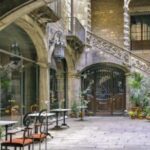 Cozy Cafes and Restaurants in the Gothic Quarter
Cozy Cafes and Restaurants in the Gothic QuarterIf you want to know other articles similar to The Majestic Beauty of Sagrada Familia in Barcelona, Spain you can visit the category WHERE YOU CAN GO.
Leave a Reply

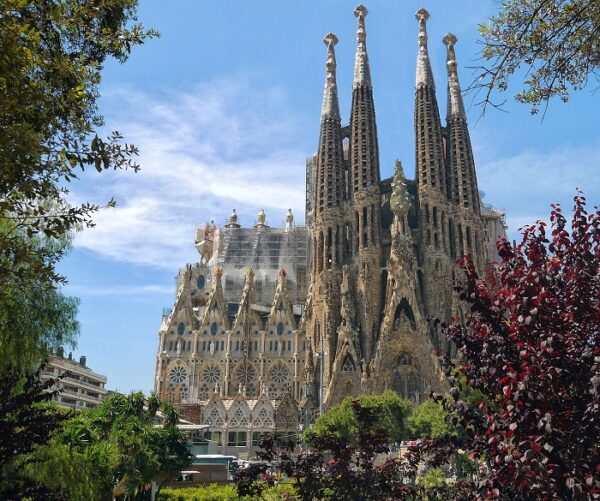
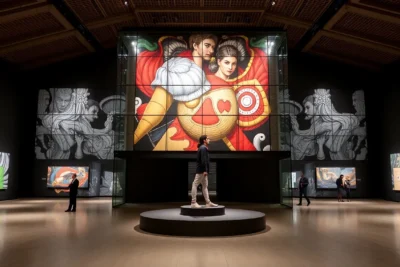
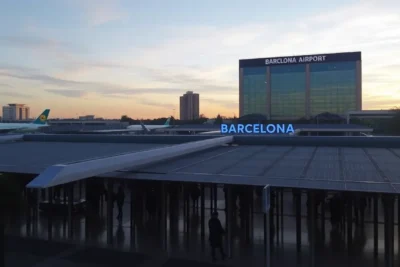

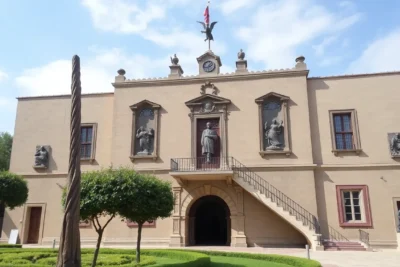

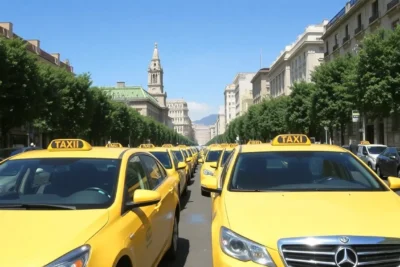
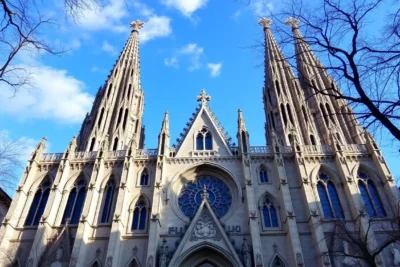

Read more!